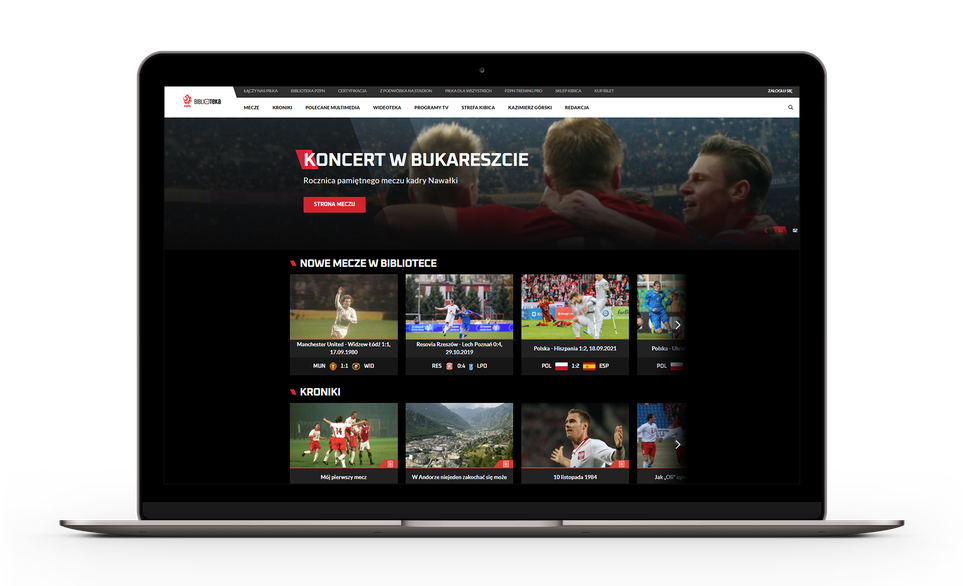PZPN (The Polish Football Association) is the biggest and one of the oldest sports associations in Poland. PZPN combines tradition with modernity. One of its symbols is websites run by the association. The Football Connects Us portal is a multifaceted platform with information for all Polish football fans. It contains articles and videos about not only the highest level football but also the ones on the amateur and children's levels. On the Football Connects Us channels, you can also watch broadcasts of important matches of the youth national teams and the league games of the Central Junior League. The strength of the Football Connects Us websites are social media. Its coordinators, in a modern and attractive way, connect with a multi-million group of Polish team fans scattered all over the world. The Football Connects Us channel doesn't forget about history. That is why the idea for the PZPN Library appeared. It’s a project unique on a global scale. On the PZPN Library website, you can find videos, photos, souvenirs, gadgets, interesting facts, and statistics related to the rich and successful past of Polish football.
Result
The headless CMS system we’ve created feeds three websites and internal systems with data. We’ve prepared it in a universal and responsive way that allows you to easily add more pages. This CMS has several features:
- Enriching the data generated in the Extranet System. The referee or coach adds basic information about the match, which then goes to the data bus. The editor can use this information in the CMS and enrich it with photos and descriptions.
- Creating new content unrelated to extranet data. The editor writes an article, for example, for the Football Connects Us website. The content is created in the CMS, from where it’s sent to the data bus so that the frontend part of the solution could download it.
- Providing data for the Extranet System. They are used for inside information. The headless CMS also produces data that isn't presented on the frontend side but is only used by internal systems.
See the PZPN websites online
Droptica's outputs have fostered positive results, earning the approval of editors and end users. Several websites and internal applications have been running on the CMS they have created. Customers can expect a helpful, supportive, and committed vendor team.
Adam Walewski
Product Owner, PZPN




